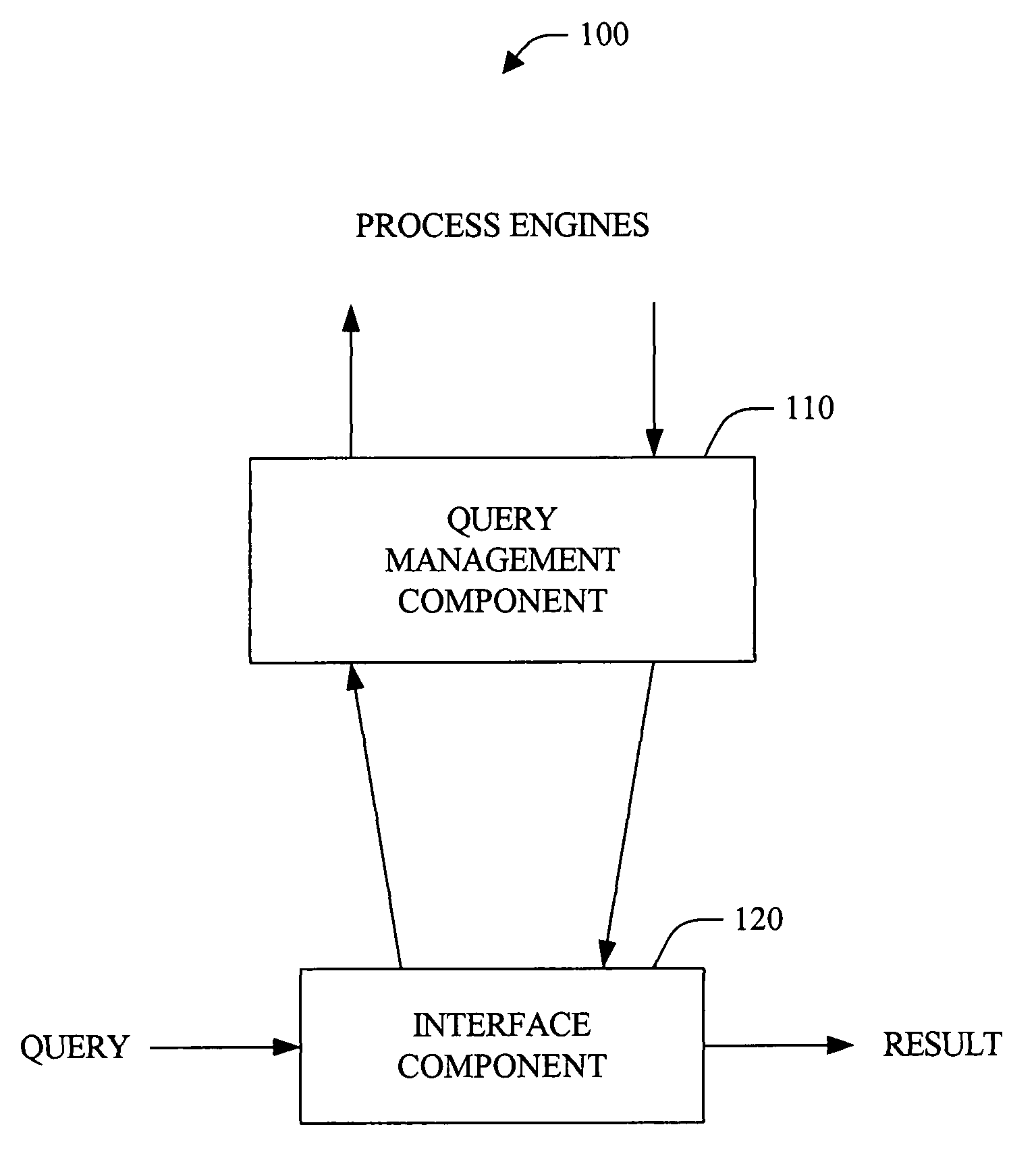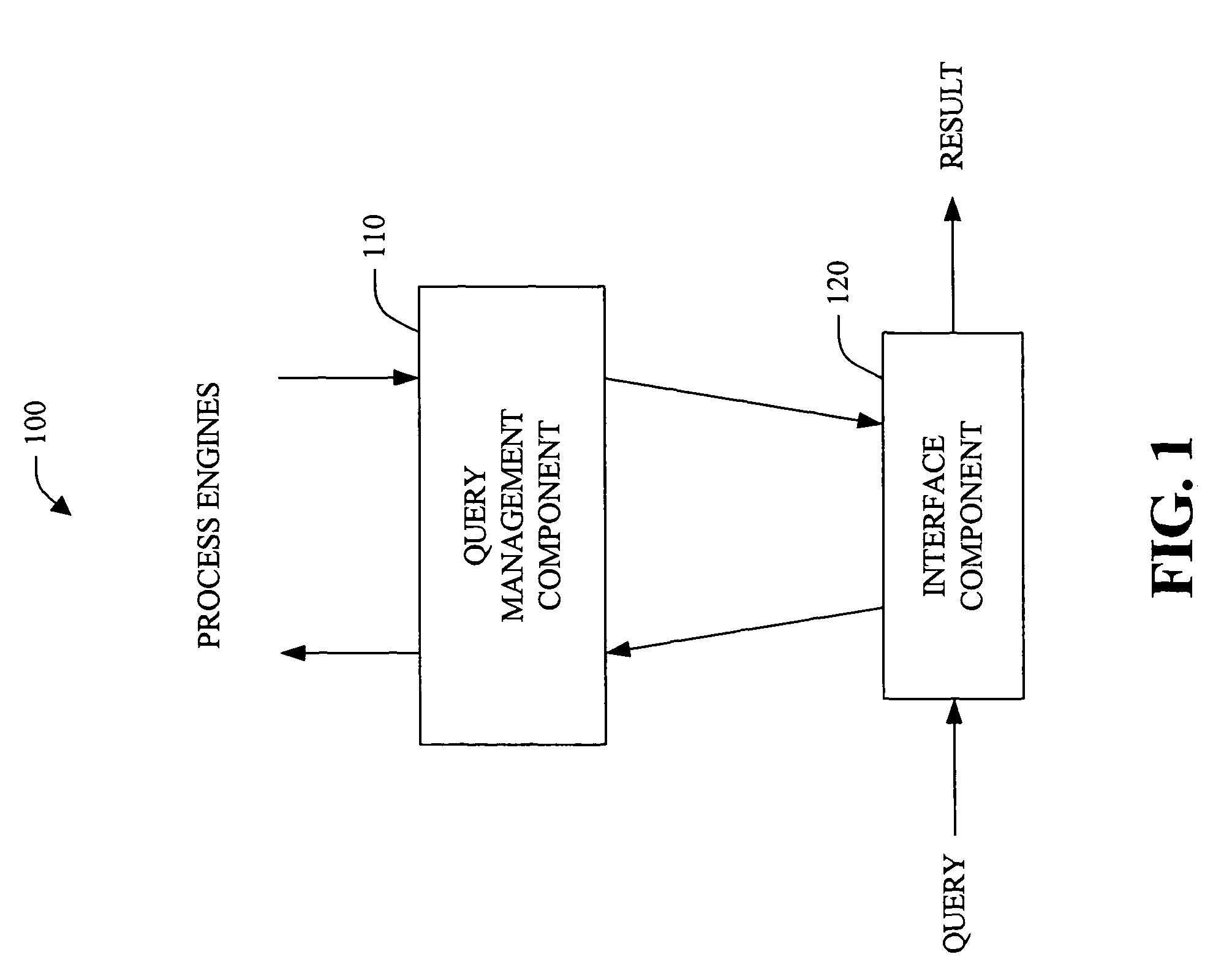Systems and methods that employ correlated synchronous-on-asynchronous processing
a synchronous and asynchronous processing technology, applied in the field of web services, can solve the problems of increasing client processing overhead, consummating client processing cycles and memory, etc., and achieves the effects of reducing client-based correlation schemes, improving performance, and efficient and seamless asynchronous processing
- Summary
- Abstract
- Description
- Claims
- Application Information
AI Technical Summary
Benefits of technology
Problems solved by technology
Method used
Image
Examples
Embodiment Construction
[0027]The present invention relates to systems and methods that provide Web-based asynchronous processing of synchronous requests. Such systems and methods enable a client that interacts synchronously to transmit a synchronous request that can be efficiently and transparently processed utilizing an asynchronous technique. For example, the synchronous request can be farmed out, or scaled across Web processing engines in order to leverage the advantages associated with asynchronous processing. The novel systems and methods employ a dynamic balancing approach to parse and delineate the synchronous request across the Web processing engines. Respective asynchronous results (including errors) can be correlated with an associated synchronous request, aggregated, and returned to the requester as a synchronous result. The systems and methods additionally allow a processing server to act as a client for another processing server within the context of the original request from the client. Thus...
PUM
 Login to View More
Login to View More Abstract
Description
Claims
Application Information
 Login to View More
Login to View More - R&D
- Intellectual Property
- Life Sciences
- Materials
- Tech Scout
- Unparalleled Data Quality
- Higher Quality Content
- 60% Fewer Hallucinations
Browse by: Latest US Patents, China's latest patents, Technical Efficacy Thesaurus, Application Domain, Technology Topic, Popular Technical Reports.
© 2025 PatSnap. All rights reserved.Legal|Privacy policy|Modern Slavery Act Transparency Statement|Sitemap|About US| Contact US: help@patsnap.com



